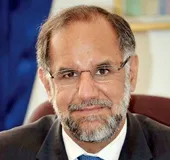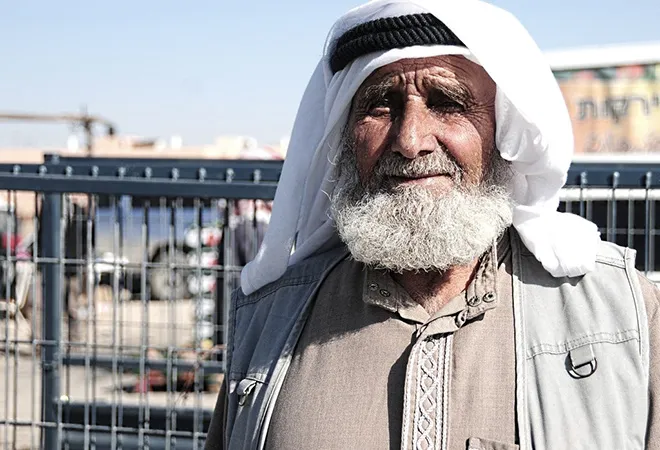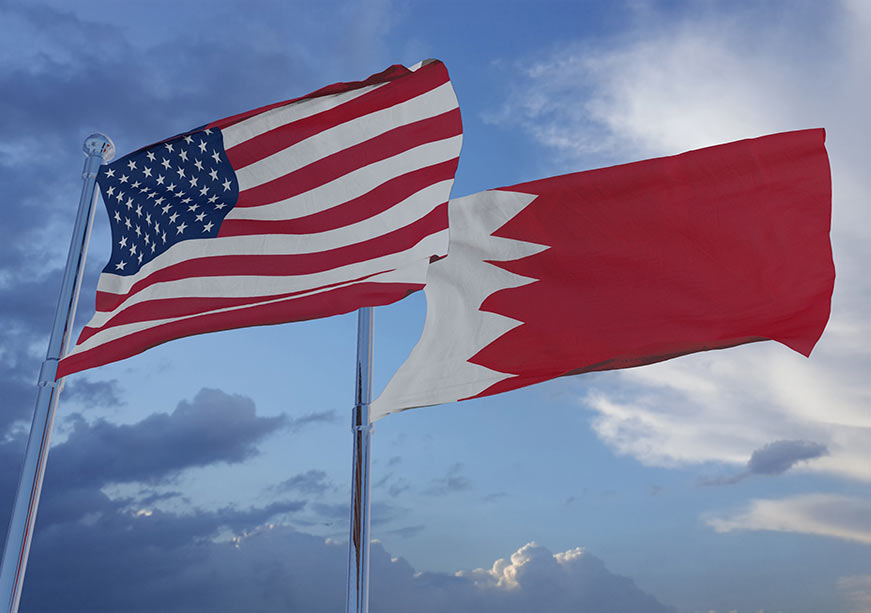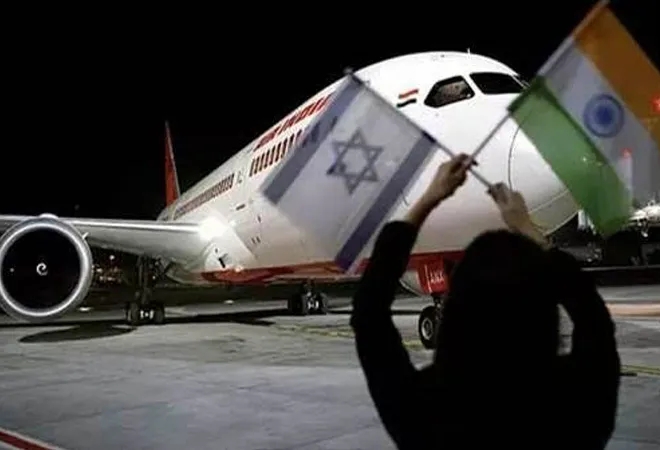As a fragile ceasefire starts to take hold in Gaza, there is a dismal sense of déjà vu. An egregious provocation that stoked the embers, the rockets fired by Hamas at civilian targets in Israel, the retaliation by Israel using overwhelming and disproportionate force, the collateral mayhem in Gaza with searing images of dead women and children, the willful destruction of vital infrastructure in a place that is already teetering on the precipice of collapse…We saw this showreel play out during the three-week conflict in 2008 that left over a thousand Palestinians and a dozen Israelis dead. The action replay in 2014 was longer and more violent, going on for some seven weeks and leaving over 2000 dead, most of them Palestinians. The 2021 conflagration, in contrast, has been mercifully shorter, lasting eleven days but still claiming some 250 lives. But the pattern is similar. Each round is followed by frantic calls for a ceasefire, accompanied by behind-the-scenes efforts by the US administration and by Egyptian intelligence officials working to cobble together a fresh ceasefire. And each round concludes with Israeli claims of delivering a crushing blow to Hamas and its ‘terrorist infrastructure’ while Hamas asserts that it has again demonstrated its steadfastness in resisting the Israeli aggression. Like two veteran pugilists, they will gather their breath and start preparing for the next round. Despite these familiar and depressing similarities, the latest round has also produced significant departures from the pattern. These have implications that go beyond the local developments and some may even transcend regional politics. It is useful to look at each of these elements and into some of the additional questions that they raise:
A tale of three conflicts
While much of the attention is rightfully focused on the destruction in Gaza, it shouldn’t diminish the impact of Gaza on two other theatres. The escalation started with clashes in the Sheikh Jarrah neighbourhood of East Jerusalem when Palestinians gathered to protest an anticipated eviction order and the blatantly one-sided law that allows Jewish citizens to claim properties in East Jerusalem and the West Bank that they may have owned before 1948 but denies the same right to Palestinians who lost their properties in West Jerusalem or in Israel proper.
The situation clearly demands a fresh initiative, but it would have to be quite different from the Trump/Kushner ‘deal of the century’ which seemed to look at the West Bank and Gaza as a real estate play
The clashes soon spread to the nearby Al Aqsa mosque. But the violence also moved beyond East Jerusalem, spilling into West Bank towns like Ramallah, Nazareth and Bethlehem which saw clashes between Palestinian residents and Israeli security forces. More important, for the first time in several decades, mixed cities like Jaffa, Tiberias, Acre and Lod have witnessed communal violence. This has served a timely reminder that 21 percent of Israel’s citizens are Palestinian, who not only face unequal laws but also resent their discriminatory application in neighbouring areas of the West Bank. Israel’s treatment of its Palestinian citizens has often drawn comparisons with apartheid South Africa and while the two situations are quite dissimilar, the question of whether Israel can remain both a Jewish and a democratic state is entirely legitimate.
A boost for Netanyahu?
PM Netanyahu is clearly an able practitioner of the motto: ‘Never waste a crisis’. His approach of forging a coalition government with the support of Israel’s ultra-right and religious parties to consolidate his position as Israel’s longest serving prime minister had appeared to have run its course. After Israel’s fourth general elections in two years, Netanyahu was finding it difficult to cobble a coalition of the required 61 members in the 120 seat Knesset. Even the cynical attempt to bring in the Arab Islamist party Ra’am, which has four seats, collapsed when the ultra-right found it a step too far. On May 5, President Rivlin invited Yair Lapid, leader of the centrist Yesh Atid party, to form a government within 28 days. The following day saw clashes between Israeli police and Palestinians protesting against an expected Supreme Court decision to evict six Palestinian families from their homes in the Sheikh Jarrah neigbourhood of East Jerusalem and hand their properties to Israeli settlers. On May 7, Israeli police stormed the holy Al Aqsa mosque, prompting a Hamas ultimatum to vacate the site by May 10. The Israelis didn’t, and Hamas fired its first barrage of rockets into Israel that night. That brought on the massive Israeli counterstrikes and also returned Netanyahu to centre stage to assert his security-first doctrine. The next few weeks will be crucial in determining if Yair Lapid can form a government with the support of a string of smaller parties including Ra’am or the baton passes back to a re-invigorated Netanyahu. Or will the country have to endure a fifth round of elections?
Undercurrents in the Potomac
The escalation in Gaza has had a curious run in Washington DC. It started with a fairly well-worn and predictable script. President Biden, a longtime supporter of Israel, came out with a statement that asserted Israel’s right to self-defense and seemed to leave a call for a ceasefire as a post-script. But the ground was shifting in his own party’s previously rock-solid support for Israel. Significantly, the discomfiture with the White House wasn’t just coming from the known stalwarts of the party’s newly energised progressive wing like Sen. Bernie Sanders and Representatives Alexandria Ocasio-Cortez and Rashida Tlaib, who spoke passionately about violation of Palestinian human rights by Israel. In the Senate, 28 members representing over half the Democratic caucus issued a statement calling for an urgent ceasefire. In the House, Rep. Gregory Meeks, Chairman of the influential Foreign Affairs Committee, was telling the Democratic members of his panel that he would ask President Biden to delay the proposed US $735 million weapons package to Israel.
The White House swung into action as it got the party’s message. After the initial greenlight for Israeli military action, it issued a firm statement on May 17 calling for a ceasefire and followed it up on May 19 with a readout conveying Biden’s own tough message to Netanyahu to ensure a rapid de-escalation. Once the ceasefire agreement was announced on May 20, Biden was happy to address the media and claim credit for ‘quiet and relentless diplomacy’, including his own six phone calls with Netanyahu.
India has been walking the tightrope and trying to maintain a balance between its traditional support for the Palestinian cause and its rapidly expanding relationship with Israel.
The rapid evolution of the White House position probably contributed to the fact that the ceasefire came within days rather than weeks. It also showed the shift taking place amongst Democrats as younger members of the American Jewish community have tended to gravitate towards J-Street, the vocal Jewish PAC which argues for a more balanced US policy towards Israel and for a two-state solution that secures the legitimate needs and national aspirations of both Israelis and Palestinians. The fact that the initiative to call for a ceasefire was led in the Senate by Sen. Jon Ossoff, the 34-year-old newly elected Senator from Georgia who is also seen as a face of a new generation of American Jews in the Congress, is, perhaps, testimony to the shifts underway.
The Awkwardness of the Abraham Accords
The violence at Al Aqsa and the ferocity of Israeli bombing of Gaza have created an awkward situation for Gulf countries like UAE and Bahrain, which had established diplomatic ties with Israel as part of the Abraham Accords signed in August 2020. The Emiratis have moved rapidly over the last few months to announce a slew of finance, technology, agriculture, tourism and security related deals with Israel; and within Abu Dhabi, there is little support for Hamas and its overtly Islamist agenda. But the brazen actions of Israeli police in Al Aqsa mosque, that too on Leylat al Qadr, the holiest night in the month of Ramadan, is a different proposition altogether. An attack on the third holiest Muslim mosque demanded a firm stance and evoked tough statements from the Organisation of Islamic Countries and from Abu Dhabi and Riyadh. It also provided a reminder that the unresolved political and national aspirations of the Palestinians still have the potential to upset the regional calculus. UAE had been quick to underscore that the Abraham Accords had helped forestall an imminent annexation of several areas of the West Bank by Israel. But in the absence of a durable peace process, the clock was ticking on this moratorium.
Whither Palestine?
The relentless spread of Jewish settlements under the benign watch of the Netanyahu administration has not only reduced the map of the West Bank to a piece of Swiss cheese but also raised questions about the economic and political viability of a Palestinian state. There is no indication that a future Israeli government would roll back the illegal settlements, and in the absence of the political will needed for this, the very principle of a two-state solution is undermined. The situation clearly demands a fresh initiative, but it would have to be quite different from the Trump/Kushner ‘deal of the century’, which seemed to look at the West Bank and Gaza as a real estate play and raised more questions than it answered. Will the Biden administration have the stomach to wade into an issue that has bedeviled almost every previous administration in the last fifty years? And will the progressive wing of the Democrats be able to sustain the kind of momentum needed for a genuine peace process to get off the ground? Equally important, will the Palestinian leadership be able to get its act together and arrive at some sort of a modus vivendi between the Palestine Authority in Ramallah and Hamas in Gaza that enables them to speak with one voice? The next few months may provide some answers.
India’s tightrope act
India has been walking the tightrope and trying to maintain a balance between its traditional support for the Palestinian cause and its rapidly expanding relationship with Israel. A bit of perspective might be in order. India recognised Israel in 1948 but full diplomatic relations were only established in 1992 by the Narasimha Rao government. Until then, Israel had a small footprint in Mumbai through its consulate while India had no representation in Israel. In contrast, India accorded diplomatic status to the office of the Palestine Liberation Organisation in Delhi as early as 1980 and treated Yasser Arafat as head of state once the PLO declared an independent state of Palestine with its capital in East Jerusalem in 1988. India initially opened its representative office in Gaza in 1996 and moved it to Ramallah once Hamas took control of Gaza and the influence of the PLO leadership was largely confined to the West Bank. India’s ties with Israel grew steadily but the relationship was largely kept under wraps and India continued to voice full-throated support for the Palestinian cause at the UNSC and elsewhere. There was a subtle shift during the Vajpayee government, which saw the first publicly announced ministerial visits from India to Israel, while Ariel Sharon became the first Israeli Prime Minister to visit India in 2003. The election of PM Narendra Modi in 2014 brought a more fundamental shift, with President Pranab Mukherjee becoming the first Indian head of state to visit Ramallah in 2015 and PM Modi becoming the first head of government to visit Israel in 2018. In between the two landmark visits, India not only received Palestine President Mahmoud Abbas in 2017 but also started to nuance its position on the status of East Jerusalem even while it reiterated its continued support for a two-state solution. The present crisis has again brought out the difficulties inherent in taking a balanced position. Having provided timely and unstinting military support to India, Israel has reason to feel aggrieved over the statement by India’s Permanent Representative to the United Nations urging both sides to show restraint, desist from actions that exacerbate tensions and refrain from trying to change the existing status quo, including in East Jerusalem and its neighbourhood. The Indian tricolour was conspicuously absent from the flags posted by Netanyahu when he tweeted to thank the countries that had resolutely stood by Israel.
The way forward
The deep-rooted structural issues related to the Israel-Palestine conflict are unlikely to be resolved by the band-aid provided by the latest ceasefire. While the conflict has again attracted the attention of the international community, it will need a concerted effort by all key players to impart some substance to the dormant peace process. While the US administration will have to do the heavy lifting and the UNSC has to play a facilitating role, it will be vital to bring on board key regional players like Egypt, Jordan and Qatar, along with Saudi Arabia and UAE. Egypt has diplomatic ties with Israel and controls the crucial Rafah crossing into Gaza. Despite the antipathy of the Sisi government towards Hamas, its intelligence agencies have always had a fair degree of influence. Jordan, as the other country that has maintained long-standing diplomatic ties with Israel, has notional control over the Al Aqsa mosque in Jerusalem in an arrangement that goes back to the 1967 war. It also provides vital international access for Palestinians in the West Bank and also has a large Palestinian population of its own. Qatar, on the other hand, is important because of its ties with Hamas and its continued financial support to sustain some form of an administration in Gaza. Moreover, former Hamas head, Khaled al Meshaal, and several other senior Hamas leaders continue to operate out of Doha. Former Palestinian security chief, Mohammed Dahlan, is based in Abu Dhabi and the Saudis enjoy influence with President Mahmoud Abbas and his acolytes. Israel, on its own, has shown little interest in offering a ray of hope to the Palestinians. Its overwhelming military superiority and the presence of a benign political setup in Washington have tended to shrivel the incentive for a negotiated solution. At the same time, a status quo that pits the growing adventurism and impunity of Israeli settlers against the seething resentment of the Palestinians is clearly unsustainable. Without a sustained effort by the international community, another conflagration is almost inevitable. This Gaza ceasefire is welcome, until the next time…












